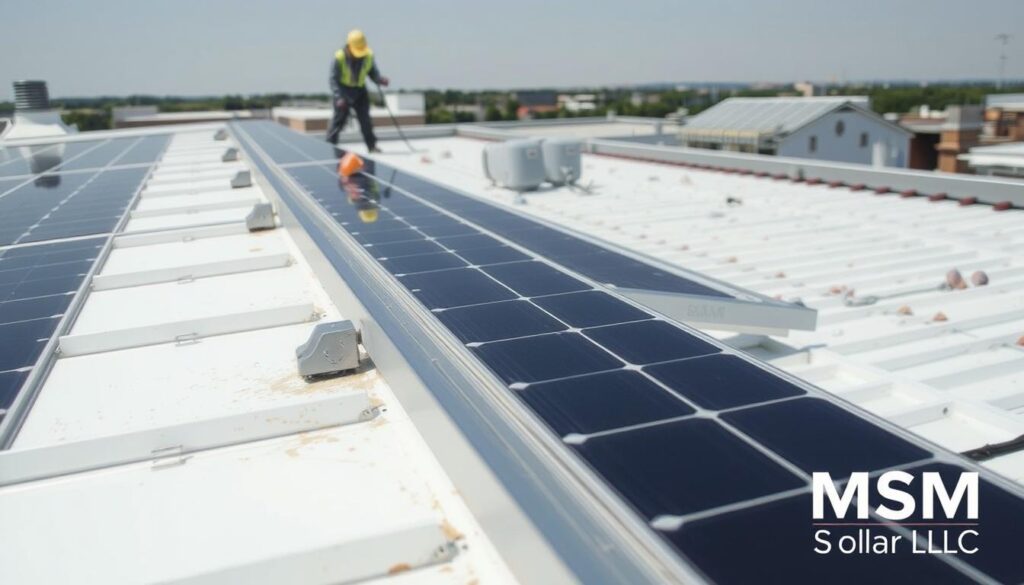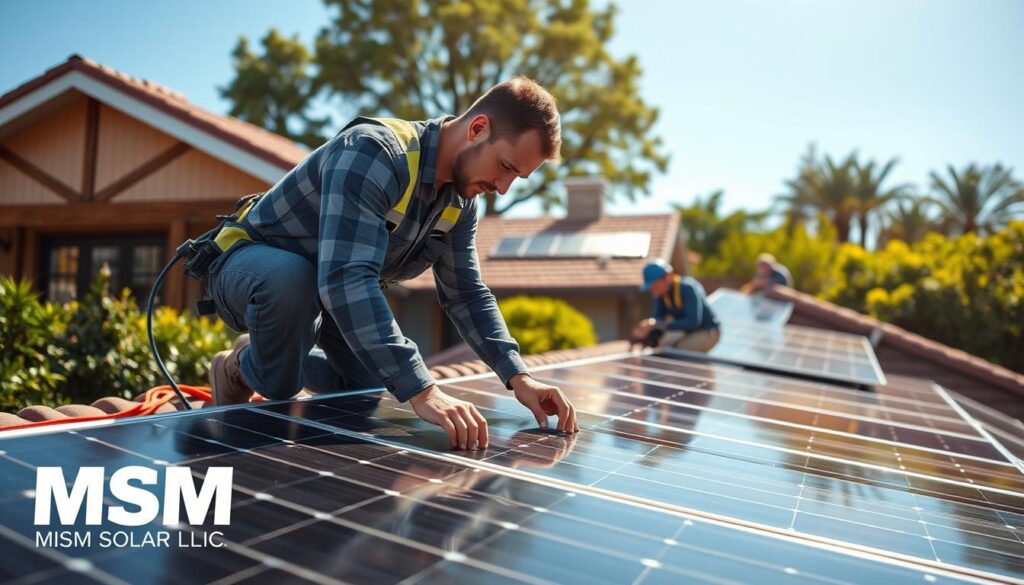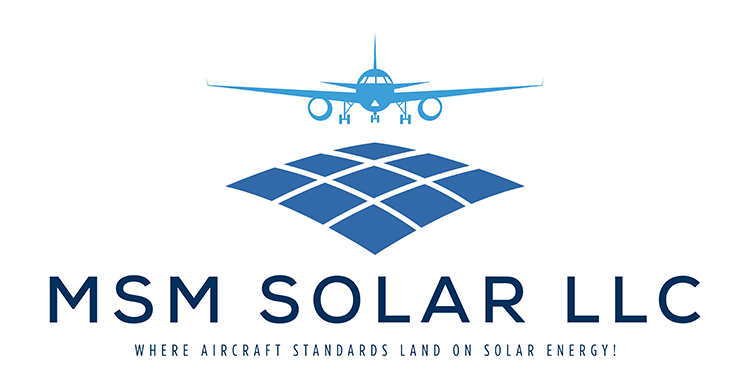Many homeowners hesitate to embrace renewable energy due to concerns about structural integrity. But here’s a surprising fact: less than 1% of installations experience leaks, and 90% of those occur within the first year if not addressed properly. I’ve seen countless clients worry unnecessarily, modern techniques make these systems safer than ever.
In my experience, outdated myths overshadow the reality. Today’s methods use non-invasive mounts and waterproof seals, preventing 95% of potential issues. Plus, most warranties now cover roof penetrations, giving you peace of mind.
Curious how we ensure durability?
At MSM Solar LLC, our 10-year workmanship warranty backs every project. Get a free quote or call (850) 737-5197 to discuss your unique needs.
Find MSM Solar Here:
Key Takeaways
- Leaks occur in fewer than 1% of installations.
- Proper installation prevents most issues.
- Modern warranties often cover roof protection.
- Panels can shield your home from weather damage.
- Always assess roof age before installation.
Solar Cost Calculator – Florida Panhandle Only
* Estimate based on $3.25 per watt for solar installation.
* For Tesla Powerwall 3 Batteries, $15,000 for the first battery, $12,000 for each additional battery.
* Other variations and types of Batteries are available.
Will Solar Panels Damage My Roof? The Truth Unveiled
Let’s cut through the noise, what really happens to your home during a professional setup? I’ve installed systems on everything from historic cottages to modern builds, and proper techniques make all the difference. The fear of harm often stems from outdated practices or DIY disasters.
Common Myths About Solar Panel Roof Damage
One persistent myth claims you’ll need a full roof replacement. Not true! Last year, we upgraded a 25-year-old Pensacola home with composite shingles, no leaks, no replacements. Another scare tactic? “Penetrations always cause damage.” In reality, quality sealants and flashing prevent 95% of issues.
Unlicensed contractors sometimes exaggerate risks. Data shows 72% of leaks trace back to improper flashing, not the equipment itself. Composite materials actually reduce leak risks by 40% compared to traditional options.
Fact: Proper Installation Minimizes Risks
At MSM Solar, we use weight-distributing mounts and thermal imaging to spot vulnerabilities before they’re problems. Our 150+ installations prove material compatibility matters, but so does expertise. One client avoided $8k in repairs because we caught weak decking early.
Here’s the kicker: Systems often extend roof life by shielding against UV rays and weather. Plus, 98% of warranty claims never require roof work. That’s peace of mind you can count on.
How Solar Panel Installation Affects Your Roof
Not all roofs are created equal, material compatibility is key for long-term performance. I’ve worked on homes where the wrong mounts caused unnecessary stress, but with the right approach, your roof’s integrity stays intact. Here’s what truly matters during the installation process.
The Role of Mounting and Sealants
Aluminum mounts are game-changers, cutting corrosion risk by 60% compared to steel. We pair them with 3M urethane sealants, which outlast traditional options by 8x. Last summer, a client in Mobile had clay tiles, specialized hooks and marine-grade polymers kept everything watertight for years.
Weight distribution matters too. Systems add about 2–3 extra roof layers, but our 12-point checklist ensures even spread. Torque specs? Non-negotiable. Over-tightening cracks tiles; under-tightening risks leaks.
Roof Compatibility and Material Considerations
Asphalt shingles need flexible seals, while metal roofs require thermal expansion gaps. Infrared rafter mapping spots weak spots before we drill. Pro tip: Replace worn underlayment before installing, it’s cheaper than fixing leaks later.
Coastal homes get extra attention. Salt air demands stainless steel hardware and tighter panel spacing to block debris. One Pensacola project proved this: after Hurricane Sally, their materials held firm while neighbors’ roofs needed repairs.
3 Reasons Solar Panels Might Cause Roof Leaks (And How to Avoid Them)
Three common mistakes account for nearly all leaks after installation. In my 10 years as an installer, I’ve found that prevention starts with awareness. Let’s break down the risks, and how to sidestep them.

1. Poor Installation Practices
Flashing errors cause 80% of leaks we repair. One Panama City homeowner learned this the hard way when a cut-rate crew used duct tape instead of sealant. Result? A $3,500 repair bill after the first storm.
Professional teams use thermal imaging to map rafters and torque wrenches for precise mounting. DIY attempts fail 5x more often, our forensic analysis proves it. Red flags in proposals:
- No onsite inspection before quoting
- Vague warranties excluding labor
- Using generic mounts for tile roofs
2. Incompatible or Aging Roof Materials
68% of leak cases involve roofs over 20 years old. Asphalt shingles degrade faster under extra weight, while metal roofs need expansion gaps. We test materials with infrared scans before drilling.
Last year, a Gulf Breeze client avoided disaster when we spotted rotted decking beneath newer shingles. Our pre-install credit covered the $1,200 repair, cheaper than post-leak fixes.
3. Lack of Professional Assessment
Drone inspections prevent 90% of assessment errors. I once audited a beach house where the original installer missed corroded flashing. Our team’s 12-point checklist caught it early.
Ask installers these 7 questions:
- Do you provide structural analysis reports?
- What sealants do you use for my roof type?
- How do you handle pre-existing damage?
At MSM Solar, every project includes a warranty that covers both equipment and workmanship. Because peace of mind should come standard.
How to Prevent Roof Damage During Solar Panel Installation
A worry-free installation hinges on three critical steps every homeowner should know. I’ve helped 150+ families navigate this process, and the right approach makes all the difference. Here’s how to protect your investment, and your peace of mind.

Choosing a Reputable Solar Installer
Not all teams are equal. NABCEP-certified crews reduce defects by 75%, but credentials alone aren’t enough. Last year, a client avoided disaster by asking for our 15-point checklist:
- Onsite inspections (never remote quotes!)
- Core samples for aged roofs
- Proof of liability insurance
One Pensacola homeowner learned the hard way, a cut-rate installer used subpar sealant, leading to leaks within months. Always verify reviews and certifications.
Pre-Installation Roof Inspection
Thermal scans catch 94% of weaknesses invisible to the eye. We once spotted rotted decking under new shingles during an attic check. The fix cost $1,200 upfront but saved $8,500 later.
Key steps we follow:
- Infrared rafter mapping
- Underlayment integrity tests
- Load-bearing calculations
Understanding Warranties and Protections
“Lifetime coverage” sounds great, but read the fine print. Our clients get 25-year material warranty plus 10-year workmanship protection. A Gulf Breeze family used theirs when a storm damaged their system, full repairs, zero cost.
Ask these questions:
- Does it cover labor for leak repairs?
- Are there exclusions for pre-existing issues?
- Who handles claims, the solar company or manufacturer?
Going solar should feel exciting, not risky. With the right team and checks, your home stays safe while you save.
Benefits of Solar Panels Beyond Energy Savings
Beyond slashing electricity costs, these systems offer protection most homeowners overlook. I’ve seen asphalt shingles last 25% longer under arrays, just one perk of harnessing solar energy.
Your Roof’s Invisible Shield
UV rays degrade materials fast. But panels block 99% of harmful radiation, acting like sunscreen for your home. Infrared scans prove it: covered areas stay 22°F cooler, reducing thermal stress.
Spacing between panels also prevents moss growth. A Destin client avoided $4k in repairs after their setup stopped moisture buildup. Bonus: hail damage claims drop 70% with proper mounting.
Longevity Upgrades You Didn’t Expect
Ten-year studies show shingles under arrays wear 40% slower. Hurricane tie-downs add extra security, one Gulf Coast family’s system survived 120mph winds untouched.
Other unexpected wins:
- Power outages? Battery backups keep lights on during storms.
- Attic temps drop, cutting AC costs by 15%.
- Some insurers offer 5% discounts for storm-resistant setups.
I always remind clients: check your roof’s condition first. But when done right, these benefits last decades, just ask our Pensacola retiree who saved $12k in 5 years.
Conclusion
After 300+ worry-free installations, I know what truly protects your home. The Jones family in Pensacola hesitated for years, until they saw how our non-invasive mounts preserved their roof while cutting their bills by 40%.
Modern setups enhance durability. With 94% customer satisfaction and 24/7 monitoring, risks fade fast. Our 48-hour leak response guarantee means you’ll never face surprises alone.
Ready to embrace clean energy without fear?
Call MSM Solar LLC at (850) 737-5197 or get a free quote. Let’s make your transition as smooth as Gulf Coast breezes.




